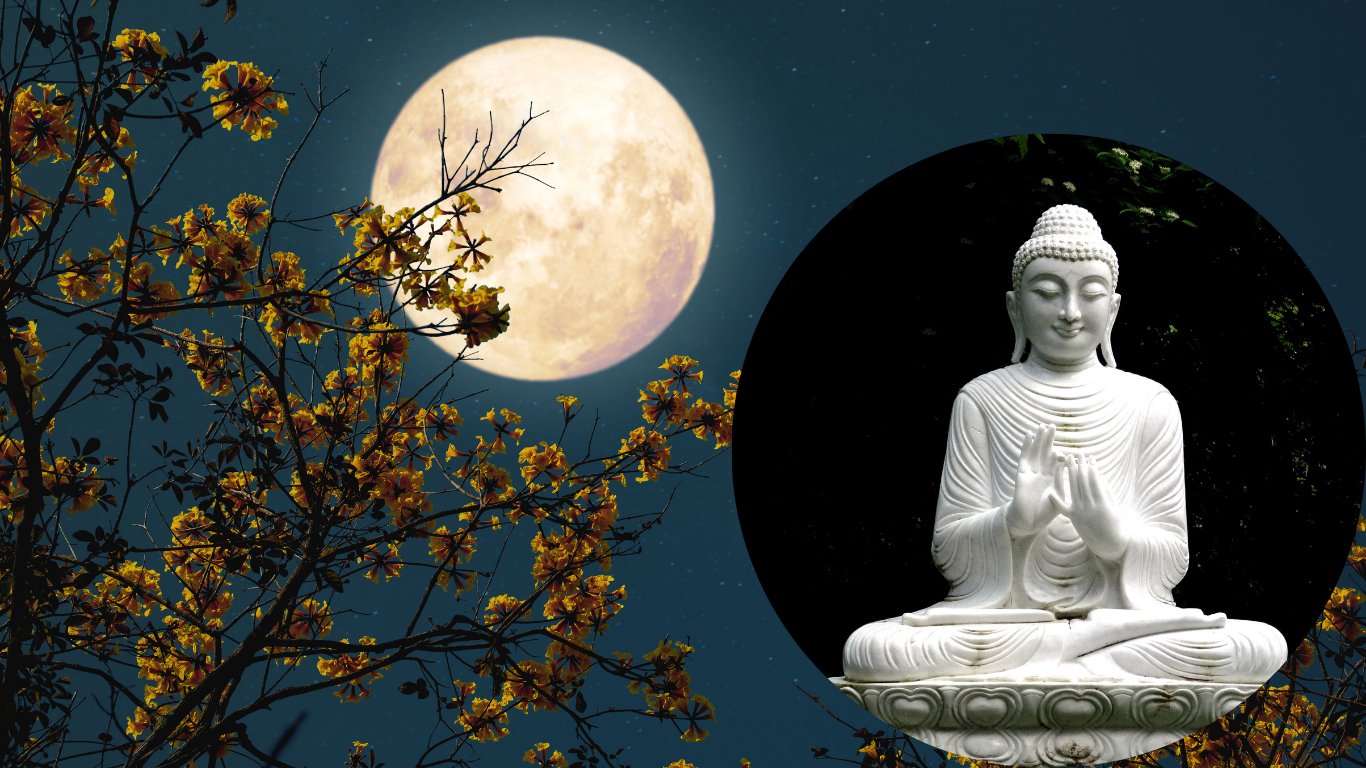Full Moon Day (Uposatha) in Buddhism
By Nivitigala Sumitta (Bhante Sumitta)
The Full Moon Day, or Uposatha (Sanskrit: Upavasatha), holds a significant place in Buddhist practice, tracing its origins back to the time of the Buddha around 600 BCE. These observance days are vital for both lay practitioners and monastics, offering a structured opportunity for spiritual growth, community engagement, and deepened understanding of the Buddha’s teachings. The Buddha taught that Uposatha days are meant for “the cleansing of the defiled mind,” leading to inner calm and joy.
The Pali names for Uposatha days are often based on the Sanskrit names of the nakṣatra (constellations) through which the moon passes. Here are the Full Moon Uposatha Day names:
| January | Phussa | දුරුතු (Duruthu) |
| February | Māgha | නවම් (Navam) |
| March | Phagguṇa | මැදින් (Medin) |
| April | Citta | බක් (Bak) |
| May | Vesākha | වෙසක් (Vesak) |
| June | Jeṭṭhā | පොසොන් (Poson) |
| July | Āsāḷha | ඇසල (Esala) |
| August | Sāvana | නිකිනි (Nikini) |
| September | Poṭṭhapāda | බිනර (Binara) |
| October | Assayuja | වප් (Vap) |
| November | Kattikā | ඉල් (Il) |
| December | Māgasira | උඳුවප් (Unduvap) |
Practice on Uposatha Days
Lay Practice
For lay practitioners, Uposatha days are an opportunity to engage deeply with the Dhamma. Many choose to observe the Eight Precepts, which include refraining from killing, stealing, false speech, intoxicants, and sexual activity, as well as avoiding food after midday, entertainment, and luxurious living conditions. This practice offers laypeople a glimpse into monastic life and fosters a spirit of mindfulness and focus on spiritual development.
During Uposatha, many devotees visit local temples, participate in meditation sessions, and listen to Dhamma talks from monks. For those unable to attend temple events, Uposatha becomes a time for personal reflection, meditation, and increased Dhamma study at home.
Monastic Practice
In monasteries with four or more bhikkhus, the local Sangha will recite the Patimokkha on new-moon and full-moon Uposatha days. Before the recitation, monks confess any violations of the monastic rules to one another or to the Sangha, promoting accountability and reinforcing their commitment to the monastic code.
Conclusion
The Full Moon Day Calendar and the practice of Uposatha are essential aspects of Buddhist life, providing structured opportunities for reflection, communal engagement, and spiritual growth. By participating in Uposatha observances, both laypeople and monastics reinforce their commitment to the Dhamma, fostering a sense of community and shared purpose. As practitioners embrace these sacred days, they cultivate mindfulness, compassion, and wisdom, enriching their spiritual lives and the lives of those around them.

